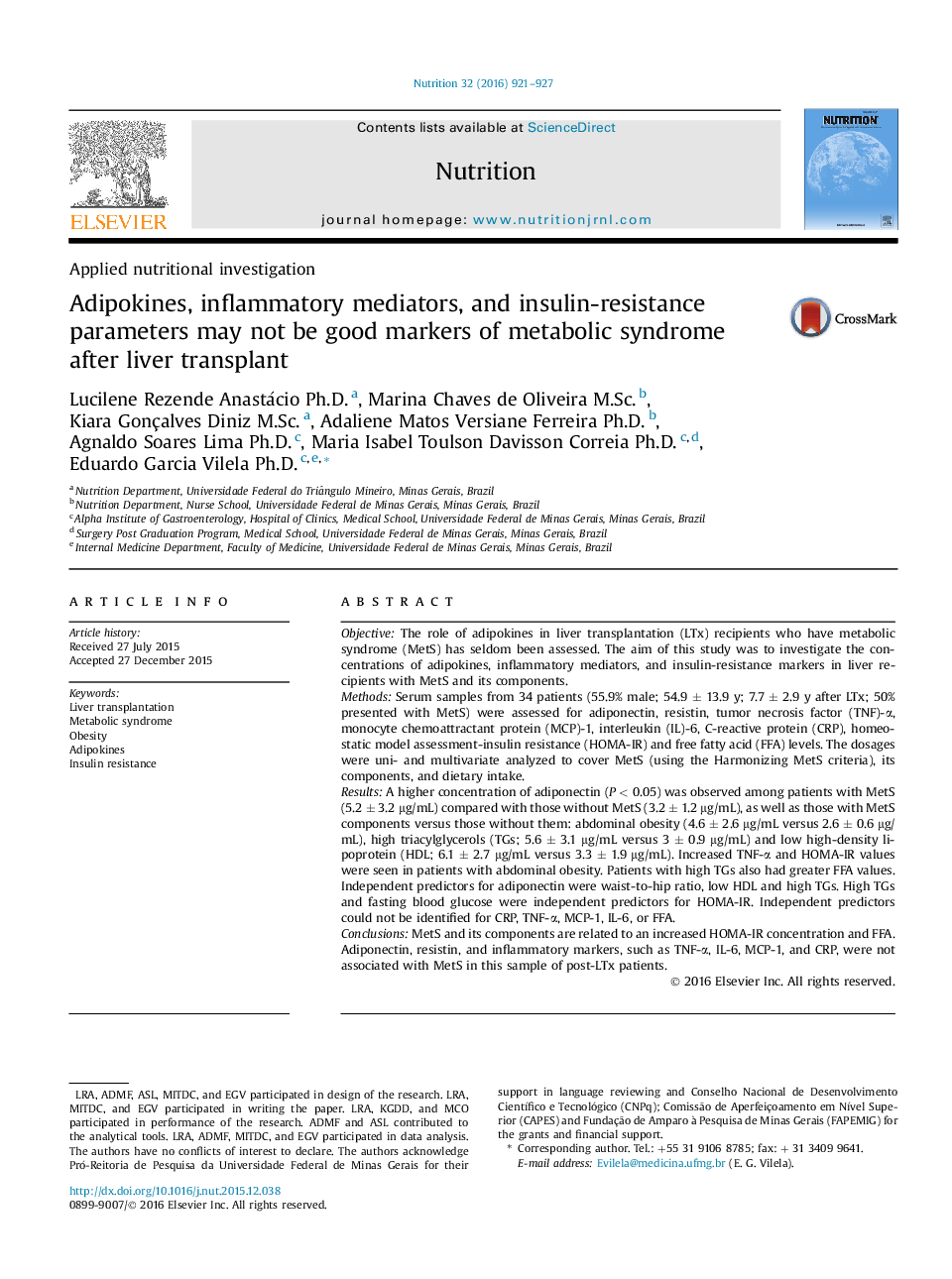| کد مقاله | کد نشریه | سال انتشار | مقاله انگلیسی | نسخه تمام متن |
|---|---|---|---|---|
| 3276092 | 1208528 | 2016 | 7 صفحه PDF | دانلود رایگان |
• Obesity and metabolic syndrome (MetS) are highly incident in patients after liver transplant (LTx).
• Very little is known on the role of adipokines in individuals with MetS after LTx.
• Classical markers of MetS in the overall population were not associated with it in the LTx patients in this study.
• It is of utmost importance to understand the mechanisms enrolled in the development of MetS in LTx.
ObjectiveThe role of adipokines in liver transplantation (LTx) recipients who have metabolic syndrome (MetS) has seldom been assessed. The aim of this study was to investigate the concentrations of adipokines, inflammatory mediators, and insulin-resistance markers in liver recipients with MetS and its components.MethodsSerum samples from 34 patients (55.9% male; 54.9 ± 13.9 y; 7.7 ± 2.9 y after LTx; 50% presented with MetS) were assessed for adiponectin, resistin, tumor necrosis factor (TNF)-α, monocyte chemoattractant protein (MCP)-1, interleukin (IL)-6, C-reactive protein (CRP), homeostatic model assessment-insulin resistance (HOMA-IR) and free fatty acid (FFA) levels. The dosages were uni- and multivariate analyzed to cover MetS (using the Harmonizing MetS criteria), its components, and dietary intake.ResultsA higher concentration of adiponectin (P < 0.05) was observed among patients with MetS (5.2 ± 3.2 μg/mL) compared with those without MetS (3.2 ± 1.2 μg/mL), as well as those with MetS components versus those without them: abdominal obesity (4.6 ± 2.6 μg/mL versus 2.6 ± 0.6 μg/mL), high triacylglycerols (TGs; 5.6 ± 3.1 μg/mL versus 3 ± 0.9 μg/mL) and low high-density lipoprotein (HDL; 6.1 ± 2.7 μg/mL versus 3.3 ± 1.9 μg/mL). Increased TNF-α and HOMA-IR values were seen in patients with abdominal obesity. Patients with high TGs also had greater FFA values. Independent predictors for adiponectin were waist-to-hip ratio, low HDL and high TGs. High TGs and fasting blood glucose were independent predictors for HOMA-IR. Independent predictors could not be identified for CRP, TNF-α, MCP-1, IL-6, or FFA.ConclusionsMetS and its components are related to an increased HOMA-IR concentration and FFA. Adiponectin, resistin, and inflammatory markers, such as TNF-α, IL-6, MCP-1, and CRP, were not associated with MetS in this sample of post-LTx patients.
Journal: Nutrition - Volume 32, Issue 9, September 2016, Pages 921–927
